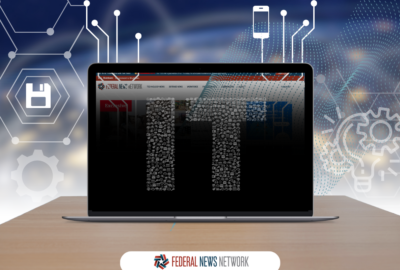Business-group leader dials-in on proposed AM car-radio mandate
Congress should refrain from legislation that would require automobile makers to equip cars with AM radio. Gary Shapiro argues the technology is obsolete.
Congress should refrain from legislation that would require automobile makers to equip cars with AM radio receivers. That’s according to the Federal Drive with Tom Temin next guest, who argues the technology is largely obsolete and no one listens. Gary Shapiro is president of the Consumer Technology Association.
Interview Transcript:
Gary Shapiro Thanks Tom. Although I’m going to start out by saying that totally mischaracterized what I’ve said. A proposal in Congress, which is moving quickly, it’s called the AM radio for every Vehicle Act. And it would require is that every car have an AM radio for the rest of history. I think it’s ironic, because we’re celebrating our 100 year anniversary this year. We started as the Radio Manufacturers Association, and never before in the history of your show, or in Washington as a trade association, oppose a mandate for its products. The fact is today AM radio is in 98% of cars today, and people like it and listen to it, but not everyone. And it’s especially incompatible with the fact that a good portion of the federal government is working hard to get electric vehicles on the road for good green reasons. And this is contrary to that, because the way AM radio works is it’s on the exactly the same spectrum which interferes with these huge batteries that are in every electric car, over half a ton of batteries. And it just total interference. So get those batteries, and AM radio working is incompatible.
Tom Temin You could say that electric vehicles, we don’t have the grid to support them. They don’t really have any net effect on emissions worldwide. And most of the profits go to China. Plus, they’re so heavy they’ll tear up the roads. So what is a little AM radio going to make a difference for?
Gary Shapiro It’s not just the weight of the AM radio. It’s the sheathing, extra sheathing that has to be put around the batteries and the cost and the redesign of the vehicles that are out there. For example, Tesla is designed without an AM radio, but there are all sorts of other ways of getting an information, whether it’s FM, satellite or even digital AM streaming. We could hear your show in other ways besides the analog AM radio, which is ancient, and a good portion of the population does not listen to it. In fact, the last emergency broadcast test, fewer than 1% of Americans relied on AM radio to get that signal.
Tom Temin Yeah, because that’s at variance, I guess, with what you read from some of the Pew studies and other studies that 82 million Americans listen to terrestrial radio at some point during the week, and that a good portion of them listen to AM at least. In fact, there were comments on your own LinkedIn blog, which was well written, that well, gosh, I listen to news, traffic and weather on AM. Then I go back to whatever else I was listening to.
Gary Shapiro Absolutely. Many people listen to stations like yours, but the question the way that’s asked in those surveys is, have you listened to AM radio at all in the last week or month or year? And I’ve listened to AM radio by that measure, because I take a lot of Ubers and Lyfts around Washington, DC, and often AM radio is on listening to your station. You or someone else. I would answer that question. Yes, I listen, but do I listen to AM radio? In terms of my percentage of airtime, it’s definitely under 5%. I like it. Radio is a very warm, intimate experience. You can learn a lot. It takes a task of driving. But the other reality with driving is we’re going more and more to self-driving cars, and a driver will have other options besides listen to the radio. They’ll be able to use their eyes and work in the office, laid down and sleep, do all sorts of things. So there’s two trends working against AM radio. But I know there are a lot of AM radio stations are linked at them. They have online options. It’s not that different than what we hear with video blogs or other blogs or podcasts or things like that. So the AM radio skill is that you and your colleagues have transferred over to many other areas.
Tom Temin Yes. That brings up another question that’s not precisely on the point that you were writing about. Send that is years ago, the idea was for some kind of Wi-Fi equivalent of a broadband broadcast type of signal that wasn’t terrestrial radio, but was public broadband that would be picked up in car radios. That idea was touted and never really developed. Is that just one of those thoughts left in history at this point?
Gary Shapiro Well, I think one of the things that we advocate for is competition in broadband. Obviously it’s great if you can get it by fiber optic, you can get it by cable. You can also get it by power line by satellite and liquid. Elon Musk was involved in both these issues actually. He’s giving people access to communications like not only in Ukraine but in remote portions of the world. So basically there’s a lot of options there so you can get a signal anytime, anywhere. My question is, do you have the right hardware and are you subscriber? Look, Apple has done something with their phone so you can use your phone in emergency almost anywhere. There’s many options out there. And one of the justifications used for this AM radio requirement is emergencies. And the irony is, the Congress is not requiring that we actually know any information about that, because as you know, a lot of AM radio broadcasting stations are not even manned. Nobody knows how many. There’s local emergencies and national emergencies. National emergency, obviously, you get things by phone, by satellite, by fire engine signals, by family radio or CB radio. There’s so many different ways to learn about information. So the question is for local emergencies, which is a lot of members of Congress are listening to they’re very politically active local broadcasters, who they often give a lot of radio time too and they get on there through PSA’s, public service announcements. Broadcasters have tremendous tools for influencing Congress, and that’s why there’s a lot of energy on this. But the reality is there’s no safety justification, and there’s no even willingness by Congress at this point to say there has to be one that’s actually independently validated by knowing if local stations are actually staffed or not.
Tom Temin We’re speaking with Gary Shapiro, president of the Consumer Technology Association, and that is the producer of the big Consumer Electronics Show. So basically then you’re saying that rather than some kind of federal mandate, it’s incumbent on people creating content that is now on AM to discover and use the other means of getting, quote unquote, a signal into an automobile.
Gary Shapiro It will cost over $4 billion, with a B, for the car industry to start transferring over some of the cars that don’t have it, and putting these devices in as we go to electric. That’s $4 billion, which is probably more money than the entire value of almost all, if not all, of the AM radio stations out there. So this is again, the broadcasters essentially go into government, because they’re very powerful having the government subsidize them just the way they refused to pay performance royalty to musicians. The U.S. is the only place in the world that’s developed where broadcasters do not have to pay for that copyrighted content that they’re often using now on talk radio. I know it’s not an issue, in other forms, am radio it is. So bottom line this is just a political play. Broadcasters are very powerful. There’s no safety justification in Congress. Is this, some members of Congress may try to find one and do it the right thing. Let’s have a study then a mandate. As oppose to, let’s just having a mandate and screw up this whole shift to electric vehicles.
Tom Temin And if you were to walk the aisles of the Consumer Electronics Show, you don’t find clock radios, I’m presuming anymore. You don’t find radios, a box with a bunch of dials and an antenna on the back that people plug in anymore at that show. So why even FM for that matter, in a car? Why not just go to the broadband, go to use your phone to stream and hooks into your Apple CarPlay or whatever the Google version of that is, and let’s be done with it.
Gary Shapiro Well, a dozen years ago, the FM radio stations did push this concept of having a mandate of an FM chip in every smartphone. And Congress actually rejected it. They thought it was silly. What’s changed is this is just all about AM right now, and the broadcasters have their act together better and they work for in Congress for years on this. So yeah, my favorite movie all time featured a radio. It was Groundhog Day, where you got that same radio waking up in alarm. But since that movie, 30 years ago, the sales of radios have gone down about 60% in terms of discrete units. So but here is an interesting point actually. It’s not only about FM, but anyone who wants an name radio could have one. You could buy a plug in that works into your car. And that’s for those that want it. But I think our radio has a very important place. And well, for the next at least 30 years, way beyond our time. Cars last a while. 98% of cars have them, the easy thing to do is just have a notice on the car or the new cars that are being sold without a saying does not contain a radio. In fact, it used to be a consumer right to delete the radio so they could go buy a better one.
Tom Temin When they were all mechanically compatible with the knobs, six inches apart and so on. You can put it in a radio easier.
Gary Shapiro Here in Virginia, Crutcher with a Cadillac still sells a lot of radios. Every cars own features or they link you up with your car if you want a better quality sound. Which brings you to another point actually. We work with the broadcasters. For 30 years I’ve been telling them they got to get their act together radio. And we did have a joint committee and still do. And they all agree on the technical requirements to improve radio. But as we make the radios, they never seem to put those technical requirements in. So you could have great sounding music on a radio.
Tom Temin Well, as a guy who started out of newspapers, when you had the Two Star edition, Three Star Edition and the Red streak edition in the afternoon, I guess I’m still partial to some of the old technologies. But just to wrap it up, where do you think in-car technology. It still seems very much in flux at this point, with competing operating systems between the two major OS providers of mobile devices and the car companies trying to develop their own because they want to own that real estate, if you will. Where do you think this is all headed?
Gary Shapiro I think it’s headed to a better experience for consumers. I find myself in the car and I want to talk to Siri or Alexa, and I can’t. And there’s a lot of information that we could get. Obviously there’s things like car navigation systems, which we just assume now. But we didn’t have those and I was getting lost all the time. So it just keeps getting better. And I’ll replicate more and more of the home experience, especially as we shift to self-driving. Now, the truth is, under the Biden administration, as opposed to the Trump and Obama administrations, we’ve totally shifted away from self-driving and the competition in the world for self-driving. And the fact that, 40,000 Americans die and millions are injured every year, and we clog up our hospitals, have big medical costs, and we make lawyers rich. But that carnage industry wants to keep the status quo. And they’ve convinced, along with some unions, the Biden administration is to stop what they’re doing and shift to electric cars. So we’re spending billions, if not trillions on electric cars. Our kids money is being spent that we don’t have, and now we’re doing something as silly as this to try to slow it down. It’s like our government works against itself some time. It’s a huge mistake. It just makes no sense and it’s not necessary. Everyone who wants an AM radio, I’m pretty sure has one at this point.
Copyright © 2025 Federal News Network. All rights reserved. This website is not intended for users located within the European Economic Area.
Tom Temin is host of the Federal Drive and has been providing insight on federal technology and management issues for more than 30 years.
Follow @tteminWFED






